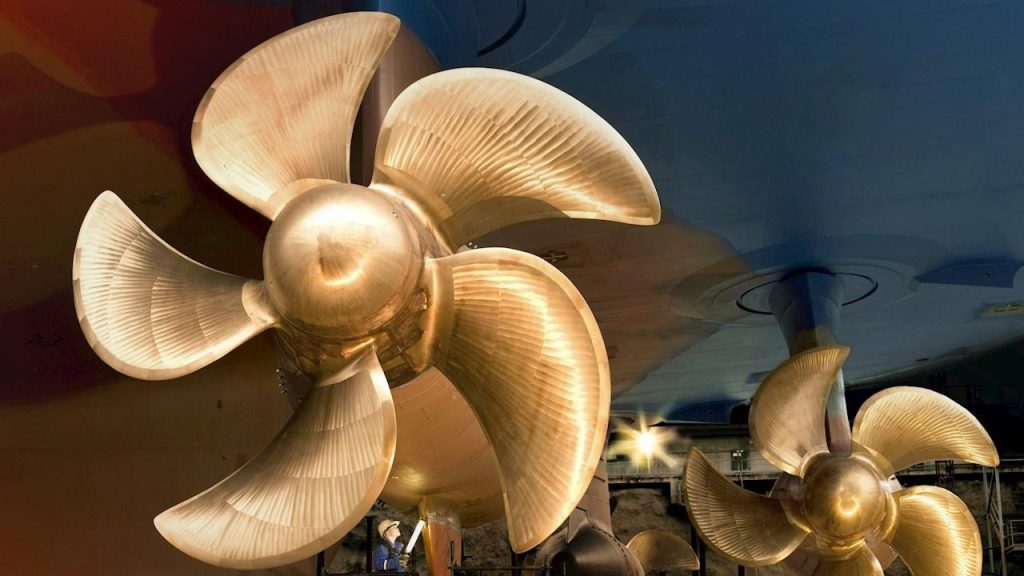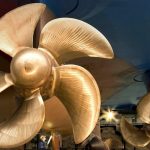A propeller is a rotating fan-like structure which is used to propel the ship by using the power generated and transmitted by the main engine of the ship. The transmitted power is converted from rotational motion to generate a thrust which imparts momentum to the water, resulting in a force that acts on the ship and pushes it forward.
A ship propels on the basis of Bernoulli’s principle and Newton’s third law. A pressure difference is created on the forward and aft side of the blade and water is accelerated behind the blades.
The thrust from the propeller is transmitted to move the ship through a transmission system which consists of a rotational motion generated by the main engine crankshaft, intermediate shaft and its bearings, stern tube shaft and it’s bearing and finally by the propeller itself.
A ship can be fitted with one, two and rarely three propellers depending upon the speed and manoeuvring requirements of the vessel.
Material and Construction of Propeller
Marine propellers are made from corrosion-resistant materials as they are made operational directly in seawater which is a corrosion accelerator. The materials used for making marine propeller are alloy of aluminum and stainless steel. Other popular materials used are alloys of nickel, aluminium and bronze which are 10~15 % lighter than other materials and have higher strength.
The construction process of the propeller includes attaching a number of blades to the hub or boss by welding or forging in one piece. Forged blades are highly reliable and have greater strength but are expensive as compared to welded ones. A marine propeller is constructed by sections of helicoidal surfaces acting together to rotate through the water with a screw effect.


